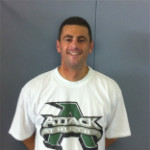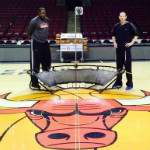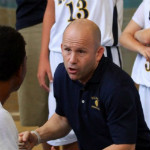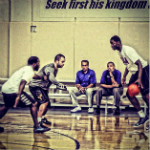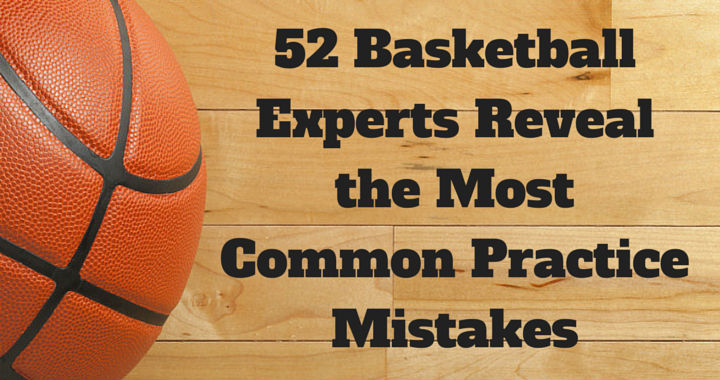 Do you ever wonder what mistakes you’re making when running a basketball practice?
Do you ever wonder what mistakes you’re making when running a basketball practice?
Since creating this blog I’ve been blessed to interact with some of the smartest basketball minds on the planet. What better way to help you than to collect the answer to a simple question from all these experts?
I asked 52 basketball experts this simple question:
“What are the most common mistakes coaches make when running a youth basketball practice?”
There’s two ways you can digest this post…
1. I’ve created this handy list so that you can skip down the page to your favorite expert.
2. Grab a coffee, make sure you have 20-30 minutes spare, and devour the entire post (highly recommended).
Alan Stein, Augie Johnston
Brian McCormick, Bryan Burrell
Casey Dudek, Chris Hyppa, Courtney Campbell
Darrell Johnson, Dave Hopla, David Nurse, Drew Hanlen, Duane Jourdeans
Galen Harkness, Ganon Baker, Gary Maitland, Gary Petrin, Greg White
Hal Wilson, Henry Barrera
James Gels, Jeremy Russotti, Jim Burson, Joe Haefner, John O’Sullivan, Jordan Delp
Koran Godwin
Lamar Hull, Lemar Griffin
Mark Adams, Matt Kramer, Matt Monroe, Micah Lancaster, Mihai Raducanu, Mike Costello, Mike Dunlap, Mike O’Halloran
Paul Fabritz
Randy Brown, Rich Czeslawski, Robert Starkey, Ryan Razooky, Ryan Walker
Sam Allen, Scott Fields, Shawn Sullivan, Sundance Wicks
Tamir Goodman, T.J Allen, Tommy Hulihan, Tony Alfonso, Trafford Hannon, Tyler Relph
Most Common Basketball Practice Mistakes
Read on to discover what all 52 experts believe are the most common practice mistakes. Responses listed alphabetically:
Alan Stein – Stronger Team
Most common mistakes youth coaches make:
- Practices aren’t age appropriate (physically, mentally or emotionally).
- Practices aren’t purposeful.
- Practices aren’t fun.
Augie Johnston – Baller Boot Camp
One thing coaches don’t spend enough time on is man to man team defense. If the team can play good help defense and rotate correctly that will directly impact their win/loss record in the end of the season and give them a good chance to have success.
Brian McCormick 
Drills should have a purpose, and the coach should know the purpose for each part of practice, even if the purpose is to take a break to recover before an intense drill.
However, the biggest mistake is talking too much and giving the players all of the answers. There is a misconception that players learn from the coach’s talking or instructing; instead, players learn from the doing. When a coach is talking, the players are not doing anything. Instructions should be short and concise.
Players need an opportunity to figure out solutions on their own rather than being told exactly what to do or what they should have done. When coaches quickly supply answers, players stop thinking and rely on the coach.
Bryan Burrell – New Age Elite Sports
In my opinion the most common mistakes when running a youth basketball practice, is the amount of time that coaches just scrimmage vs breaking down specific game situations.
I believe majority of the time youth basketball practice is spent on what will make their current team better vs working on things that will also benefit the player as they go throughout their career.
I think that when HS/Collegiate get the players they have to teach or re teach the players a lot of times because they players weren’t taught properly when they were younger. Whether it be defensive fundamentals or offensive fundamentals, the best player or worst player on a team it all needs to be taught at an early age vs allowing players just to scrimmage and end practices.
Casey Dudek – CITK Hoops
I have watched a ton of youth game and all I ever see is zone defenses.
So I would say working ONLY on a 2/3 zone on defense.
Chris Hyppa
- Coaches are too concerned with winning!
Everybody wants to win but at the youth level “development” is set on the back burner for wins. I believe development needs to be the #1 focus. Wins will follow. Development in the terms of building skill, raising basketball IQ and strengthening relationships with players!
- Have a plan!
I see a lot of youth practices with no “purpose”. Youth coaches will have more productive practices and see players improve quicker when they can document progress/failures and prepare each practice plan around these! “Confidence comes from Preparation” – YOU have the power to instill confidence, be prepared!
Courtney Campbell – Train to Ball
I think a common mistake by coaches is spending time focusing on the 20% not the 80%. This comes from Pareto principle (or the 80-20 rule) which states that 80% of the results comes from 20% of your actions.
I think many youth coach’s drills focuses on teaching certain skills that are rarely used in games. Ie. A crossover to a spin to a pull up. Drills can be randomly selected without thought on what are the dominate skills needed to create an efficient and productive player. I try to organize my drills, agility, footwork and training based on what will affect 80% of the game.
Also, there is an increase in the use of bands and other tools that in theory can increase first step, speed and quickness, however most trainers are not educated about injury mechanisms in our game. If a coach does not have knowledge of common injury mechanism, you are most likely increasing the chance of overuse injuries with these tools. (knee, back and other injuries) Use these tools with restraint or until properly educating yourself.
Darrell Johnson – Cross Over Hoops
The most common mistakes coaches make when running a youth basketball practice is neglecting the fundamentals. Some youth coaches are too concerned about the team record and how many wins they can get. Don’t get me wrong, winning is important, but skill development is much more important at the youth level.
No one is going to remember their team record from elementary school, but what they will remember is winning a varsity tournament, going to state, etc…
The majority of youth practices should be spent on skill development, rather than teaching offensive and defensive strategies. What good is a play when your players can’t dribble, pass, or shoot? The fundamentals should be taught correctly and then practiced using repetition.
If a player is doing something incorrectly, they need to be corrected before a bad habit is formed. Too many players get to middle school and high school with terrible habits that are extremely difficult to break simply because they were never corrected in elementary school.
Establishing a good foundation with fundamentals is the primary responsibility of youth coaches.
Dave Hopla – DaveHopla.com
I find that most coaches are more interested in running plays or letting them play, instead of teaching them how to play.
Never seems to be enough passing, catching, or shooting. Too much dribbling.
David Nurse
I’m a firm believer that the one of the biggest mistakes made by youth coaches is that they want to start teaching plays and forcing players to become ‘robots’.
The more coaches can emphasize drills that put young players in situations where they have to make quick decisions and think for themselves the more they will develop the IQ portion of their game early. It’s like anything, if you want to learn a new language it is easiest to do so while you are young before your brain becomes developed in that area. Same with IQ and ‘basketball feel’.
Very important to develop early and youth coaches need to do a much better job at this. I have seen it all over the world and it is the same theme, drives me nuts! I compare it and the bad habits of being a ‘robot’ to a comfy bed – easy to get into, very tough to get out of. Players need to learn to think for themselves at young age and it will pay dividends in their development.
Drew Hanlen – Pure Sweat Basketball
- Too much flash, not enough substance
- Too many old school drills (3 man weave, uncontested lay-up lines) and not enough skill development
- Too much live play and not enough breakdown drills
- Not enough correction (too many mistakes are allowed)
- Wins in lower levels are celebrated instead of focusing on improvement for long-term success
Duane Jourdeans – Rule of 5
#1: No practice plan
#2: Lack of emphasis on forming relationships with players
#3: Lack of skill development
#4: A focus on running plays rather than how to play
#5: Mistaking yelling for teaching
#6: Lack of leadership opportunities for players
#7: Bigger kids just learn to play in the post
#8: Lack of mental training
#9: Conditioning without a basketball purpose
Galen Harkness
Major Mistake: There is an over-emphasis on strategies on how to win a game that often result in sacrificing the long term fundamental development of the players and team.
Other Thoughts
1st: There is an over-emphasis on running plays or sets. Coaches have good set plays that are going to get shots, but what do the players do when the set doesn’t work? It is structured in a sense that it does not allow or encourage players to make correct playmaking decisions.
2nd: Wasted time. There is a large amount of time transitioning from one drill to the next with little sense of urgency. Drills rarely are designed or implemented so that ALL of the players are continuously engaged. Too much standing.
3rd: Lack of professional development. Coaches are teaching and running practices like they were taught to play. The game has evolved, but youth coaches have not necessarily evolved with it.
Ganon Baker – Elev8 Basketball
Problem – they talk too much during practice where the kid lose attention and their “sweat”. They are too wordy with their instruction.
Solution – keep instruction/correction to 20-50 seconds. Get “in” with their comments and then “out” with out disrupting the flow of an intense practice.
Problem – they don’t use or have a sense of humor. They seem stiff or awkward in their delivery.
Solution – Coach with a childlike heart but an adult mind. Have fun and have a personality but draw boundaries. These are kids and basketball is still a game, so have some fun!
Problem – they use useless drills in their practice. The drills are boring non game like and do not relate to the coaches offensive and defensive system!
Solution – study your craft. Try to find ways to run a progressional practice. Teach a skill, have the drill in a game like situation, then have them execute the Action with a 1 on 1 2 on 2 or 3 on 3 competition.
Gary Maitland – Coach Maitland
1. Punishment
Youth basketball practices are the early experiences of a potential long term passion and commitment to the sport we love. The biggest mistake a coach can make, is create an environment where kids fear ‘getting it wrong’.
It is sadly far too common for youth basketball coaches to punish their players for making mistakes. A player should never be afraid to make mistakes. Failure is an essential part of the learning process and therefore it is important for kids to know that they are not required to get it right all the time.
Basketball involves a number of complex skills. Skills need to be learnt, developed and mastered. When a coaches punishes a player for making a mistake, he/she discourages the player from taking risks; risks that help them explore the game and develop a feel for the fast paced action.
These early years should be engaging. Kids should be enjoying themselves as they learn new things. If a coach punishes kids with endless push-ups and sprints then it is unlikely that they’ll wish to continue. It’ll only be a matter of time before they stop attending those practices.
It is important for young players to understand the consequences for making mistakes (i.e. How does poor execution have a negative impact on performance) but punishments do not teach kids how to demonstrate a skill better next time.
This type of coaching behaviour is so common that young players judge the quality of coaching/practice by how intense the punishments were.
“How was practice?”
“It was hard. We ran a lot and did lots of push ups”.
That very answer shows that not much (if anything) was learnt during that session.
2. Long lines
Youth practices should include each player having lots of touches of the basketball. Youth basketball practices are development practices and therefore sufficient repetition of skills should be planned for.
When a coach gets players to stand in long lines, they are reducing the amount of times a player has the ball. Long lines will see many kids standing around waiting for their chance to engage with the learning but instead become bored and distracted.
It is important for youth coaches to organise their drills so that all kids are active, engaged and practicing skills.
3. Letting things slide
Youth basketball covers a wide range of abilities but ultimately it is essential that coaches do not let things slide. Beginners need to be conditioned that they can’t ‘travel’ with the basketball. If the coach sees a mistake then they must address it.
The coach must offer constructive feedback that identifies exactly what the player must do next time to improve their performance. If the coach chooses to ignore this opportunity to teach then they are in fact condoning poor execution of skills. For more advanced players, these teaching opportunities are equally as important.
The coach is doing a disservice to his/her players if he/she does not seize each moment and engage in a dialogue that will challenge the player and promote progression.
Gary Petrin – AVCSS Basketball
1. Not having a practice plan, not being prepared (what you want to accomplish, which players you want at which positions, plays, drills, water breaks – all planned with extra just in case you need a plan B).
2. Not keeping the practice flowing from one drill to the next.
3. Stopping and talking to parents while the players are in need of supervision.
4. Being late (as the coach you should never be late)
5. Having a team meeting during practice time (have it after or before, don’t eat up practice time)
Greg White – Twitter Profile
The epidemic of bad coaching in youth sports is at an all time high. I applaud USA basketball for creating a certification program but the question we must answer is this: “Who is coaching our Coaches?” Here are a few things I see wrong with Youth Practice.
1. Drills over Skills
Coaches are running drills they ran in High School. Ever watched an 8 year old team run a 3-man weave? There is no point or purpose to it. Find a way to introduce skills without over complicated drills. We teach the alphabet one letter at a time for a reason.
2. FUNdamentals
Young players shouldn’t associate Coaching and Yelling. Youth basketball should be fun while learning the Fundamentals of the game.
3. Playing over Plays
Teach Players how to play, not run plays. What you’re winning with using on the 5th grade level doesn’t translate well to the 7th grade.
4. Competition
Too many games. It doesn’t take a genius to know that in an 8 year old game a zone press into a 2-3 zone wins ball games. At that age, competition is more for the parent’s egos than the kids benefit. Let kids be kids. I don’t think we should play 5 on 5 until the age of 10.
Hal Wilson – Coaching Basketball Wisely
1) The biggest mistake youth basketball coaches make is only coaching how they were coached.
Maybe those drills were used when you were playing because they fit that team’s skill and development level and are not appropriate for the level you are coaching at now.
2) The second biggest mistake is just doing something because successful coach X does it on TV.
Big time coaches have big time players with big time needs, again, your players might have different needs. Trying to force your players into advanced skills and concepts before they have mastered the fundamentals is a recipe for a disaster of injury and/or frustration.
Coaches should look outside of their own experience to find ideas, but must adapt them to their current situation.
Practices should be designed with clear objectives (how will this drill help your team in games?), intentional progression (break large skills and concepts down), and clear game application (players must understand why the skills or concepts are important, how they will help them be more successful individually, and how they will help the team in games).
3) The third biggest mistake is coaching practice to make the coach look good instead of to get the team better.
Yes, your precision drills might look great in practice, but as mentioned in point two, if they don’t have a clear application to games then they are really more about you than your players.
4) The fourth biggest mistake is taking the fun out of practice and the sport, often in the name of winning.
Some well-intentioned youth coaches dampen or put out the competitive fire of their players by focusing too much on short term end results. Enjoy the journey and let your players do the same! We want Long Term Athlete Development of our players, on and of the court!
Henry Barrera – Shoot 360
1. Not planning practices
2. Talking too much
3. Not enough shooting and skill development
 James Gels – Coaches Clipboard
James Gels – Coaches Clipboard
A very common mistake that youth coaches make is frankly talking too much. Kids get bored and nothing is absorbed.
For high school practices, I’ve always said that a good practice is one where the players talk (communicate) and the coaches don’t have to.
Jeremy Russotti – 1 Percent Club
I think the most common mistake coaches make when running a youth practice is funcionality. It seems every practice I watch includes mostly lay up lines, free throws and scrimmaging. There isn’t anything wrong with those drills but you rarely see drills that involve players to make decisions.
Therefore, I think youth coaches should add more IQ drills that involve using their brains to make decisions. Simple 3 on 2 drills, 4 on 3 drills will really help players both offensively and defensively. These drills force players on how to make the extra pass (and correct pass), but also force players to learn how to scramble on defense.
Another area that coaches need to focus on is ball touches. Youth players need to be bouncing a ball, passing, or shooting a ball as much as possible in practice. The more reps they receive in these areas, the more they will improve. Having the team shoot free throws around the key, or just scrimmaging, doesn’t give the players enough touches to improve.
Jim Burson – JimBurson.com
There are some really obvious mistakes that aren’t limited to running youth practices, such as not being organized and not preparing in a purposeful way.
Assuming that many of the youth coaches aren’t professionally trained coaches, there are many hazards for the unaware.
Some of my immediate thoughts are these:
- Not organized
- Coach players as a group not as individuals
- Preparation for practices and games is not purposeful
- Knowing the difference between too much practice and not enough practice; must know the players’ emotional, physiological, conditioning and maturity levels in order to assess this on an ongoing basis
- Worrying too much about winning rather than trying to make the players better
- Don’t pay attention to anything but the X’s and O’s
- Don’t teach the kids how to win and lose with character, class and perspective
- Don’t develop leaders; instead of the best player doing everything, have different kids step up and take turns leading drills, for instance
- Don’t teach players how to communicate, both on and off the floor; in the gym and away from the gym
- Don’t work on developing players’ intrinsic motivation, which is best done by supporting, lifting, caring; can’t just be “my way or highway” or expect players to just do what they say
- Don’t emphasize the importance of academics along with athletics and how the two interact
- Forget that making kids better in basketball helps them be better in life; although this may happen naturally or as a by-product of the coaching, more is learned when this is planned for and built into the program.
- Play favorites, even unintentionally, often with their own child
- Think that their coaching is the only thing that makes the kids better; they forget that you can’t make someone get better – you can only influence them to want to get better themselves
- Often coach the players as though they could become a pro rather than coaching them to become all that they (the individual) can become
- Don’t know their real reasons for coaching – are they they right ones?
Joe Haefner – Breakthrough Basketball
1. Focusing on plays rather than teaching them how to play.
2. Players standing in lines.
3. Having a plan of what to do at practice.. short-term and long-term.
4. Running without a basketball to condition when they could condition while developing basketball skills at the same time.
5. Separating team offense and skill development drills. You can do both at the same time.
6. Monkey See. Monkey Do. Just doing a drill they saw on YouTube or the Internet without really focusing on the objective of the drill. It’s not what you do… it’s how you do it.
a. What are you trying to improve? What’s your objective?
b. Why are you trying to improve it? Is this age appropriate? Are there more important things to work on? Is this going to benefit them in the future?
c. How do you improve the specific skills? Does this drill accomplish your objective?
7. Creating a high-stress environment with yelling and constant criticism without understanding that the highest rate of learning occurs when stress levels are lower.
John O’Sullivan – Changing the Game Project
The biggest mistake coaches of most any sport make is that practice does not replicate the game. In other words, they practice to look good in practice, not the game. They throw perfect passes instead of game like passes. They play without defenders and then expect technical expertise with defenders.
The more practice looks like the game, the more the things players learn in practice will transfer to the game. So next time your players are practicing free throws with a low heart rate and no pressure, ask yourself “does this really replicate what it feels like to be in the line of a tied game with 1 second left?” and adjust.
Jordan Delp – Pure Sweat Basketball
When I have been around youth basketball practices, the biggest issue I have seen is that coaches spend so much time worrying about what plays to teach that they forget to teach kids how to play.
Once the initial option breaks down on offense, or the team beats your trapping defense, players have no idea how to react and adapt and it sets their development back.
Rather than focus on winning the 5th grade basketball tournament of the weekend, we should be focused on setting these kids up to be successful later in their careers by focusing on ten areas of development.
1 – Shooting Form
2 – Dribbling with both hands/against pressure
3 – Passing with both hands/against pressure
4 – Finishing with both hands/against pressure
5 – Basic footwork, triple threat reads
6 – Making FTs
7 – Moving w/o the ball
8 – Defensive stance
9 – Defensive positioning, handling screens, helping the helper
10 – Being a GREAT teammate
If our youth basketball players spent their time working on these ten areas from the earliest of ages, I believe our game would be in a much better place at the highest levels.
That means practice time must be purposeful, it must be planned, and it must be efficient. Also, there must be more of it. Youth players spend far too much time playing games and not nearly enough working on their skills.
Kids are naturally competitive and we can use practice time to foster that competitive drive – you don’t need to be playing 5 games a weekend (where losses really don’t matter that much anyway), you need to be spending more time in the gym developing your game.
Koran Godwin – Jump Start Hoops
I would say the most common mistake would be not outlining the objectives of the practice. Every practice should include drills that focus on skill, offense, defense, and team strategy.
If you are new to coaching the entire practice should be outlined on paper so cover all basis and your team is ready to compete. Any area of weakness discovered in competition should be add to your practice outline so you can address it.
Youth coaches are lucky if they can get a full 2 hours of practice time so having a solid plan of attack would help tremendously.
Lamar Hull – Inspirational Basketball
Some of the common mistakes in my opinion are:
- Screaming and yelling at their kids (there are more effective ways to get your message across)
- Not providing their team with the opportunity to scrimmage
- Not focusing on the fundamentals
- Executing drills without explaining and coaching
- Not putting any focus on defense
- Not putting any emphasis on talking as a team
Lemar Griffin
With the youth players I think the biggest mistake coaches make are the lack of repetition. What I mean by that is if you don’t practice the things you want your players to be able to do at game speed, with game like scenarios, how can you expect them to perform those same responsibilities in the actually game?
To answer the question simply, I believe the lack of practicing at game like speed with game like situations is a common mistake with youth basketball coaches.
Mark Adams – Mark Adams Basketball
1. Don’t spend enough time teaching/explaining FUNDAMENTALS.
2. Spend too much time putting in and practicing plays instead of teaching kids ‘how to play’.
3. Too much time playing zone defenses when kids need to learn the fundamentals of man to man defense.
4. Overall, youth basketball plays too many games and there is too much of an emphasis on winning. Kids should learn how to play the game and have fun.
Matt Kramer – Beyond the Hardwood
1. Teach kids to play man-to-man defense before ever considering to teach a zone.
To me, this is the biggest one. I watched a bunch of youth basketball games this past winter because my son is playing in a league for 9 and 10 year olds. Almost every game I watched the teams were playing zones.
This stunts the growth of the players on both sides of the ball. The defender isn’t learning to guard anyone and the offensive players don’t know how to navigate a zone defense. It’s bad for everyone. Teach man-to-man defense.
2. Teach kids on offense to move without the ball.
The world has gone screen and roll crazy. It’s great at the pro and high-major college level, but when everything is screen and roll at the youth level, the other 3 kids on the floor may as well be in the parking lot because they are spectators.
Dribbling kills the experience for 90% of the players on the floor and screen-roll invites lots of dribbling. Teach kids to cut and even set a screen away from the ball if they have the aptitude to understand it.
3. Don’t waste time on tricky out-of-bounds plays.
Any time wasted teaching the young ones cute out-of-bounds action is time that could have been spent teaching kids to play man-to-man defense and teaching them to play offense without the ball.
Coaches, here’s a fact: every OB under play is a great one in a youth game because nobody knows how to defend one. If you want to really help your players get better, forget about that stuff and focus on numbers 1 and 2.
Matt Monroe – Hoops Roundtable
One of the most common mistakes in running youth basketball practices is that all too often coaches focus too much time teaching players how to run sets and special defenses.
To ensure the overall development of your players and to have them reach their full potential, youth coaches most first teach the fundamentals of the game. Teach them how to play, not how to run a bunch of plays.
Micah Lancaster – I’m Possible Training
The greatest problem I see in youth coaches today is the tendency to coach young players skills and concepts they will have to “unlearn” later. There are many skills and concepts that are being taught to today’s youth that will certainly work at nine, but are of no value when they are 18.
Instead of coaches operating from the mindset of, “How can I help these player reach their dreams”, there is a common mindset of “how can I help this group win.”
I believe this is often justified by coaches by the fact that only a small percentage of players actually will achieve their dreams. This, however, is a tragic and flawed belief system. It makes me wonder how many players do not make it based on being underestimated as youth!
So my ultimate advice for youth coaches is this. Overestimate your players! Look at the skills they will need at the college level, and begin to teach them those concepts. That may result in more carry violations from a lack of technique, or travels as their timing will be off, or more missed layups due to attempting more advanced finishes. But one thing I can promise, they will start to attain those skills and concepts far quicker than the teams who are just trying to teach young players how to find success NOW.
The fact is, even many of the NBA players I work with today are still attempting to unlearn many of the habits they were taught at their younger ages. If NBA players are still impacted negatively, than even more so will the less talented!
When it all comes down to it, I’d rather see a player get to the college level, then see them with a championship at the age of 9! I would hope all coaches would agree with that.
Mihai Raducanu – No Limit Performance
Coaches should be focusing 100% on skill development.
Age 6-9 – Kids should learn motor development skills.
Age 6-12 – Kids should learn to train/practice the right way. Fundamental Skills of the Game.
Age 12-16 – Kids should learn to train. A more strategic specific model here. Introduction of technical and tactical concepts.
Age 16-18 – Train to compete. Emphasis on Winning. More Game concepts. Advanced skill development.
Age 18+ – Train To Win. Everything should be fully established. Athletes will get a higher level of education with everything. A lot of mental training here.
The formula above is what I use and what I teach to local coaches. It is a process but it is the right way to do it.
Coaches should not teach any plays and games should not be played until the age of 12 years old. They have no business playing if they don’t know how to play. They have no business playing if they can’t dribble or shoot properly.
Development of the grass roots as gone by the way side due to all the crazy AAU garbage out there and the game is ruined. Needs to change but the question is who is willing to educate the parents and the players that there are no instant results? Who is willing to treat money for what it is – piece of paper and nothing else?
Mike Costello – Pure Sweat Basketball
I think the most common mistake when running a youth basketball practice is too much 5 on 5. Enough kids don’t touch a basketball to improve.
I prefer 3 on 3 games so that every kid touches the ball, and it improves spacing (6 kids vs. 10 kids).
Mike Dunlap
Mistakes that I have made with youth camps:
1) Must establish a “camp routine” that includes such things as check in and exit system, uniform way we teach station work, competition games and keeping track of camper scores, report card camper evaluations, and other basic organizational line items.
2) System of medical needs, injury status, and record keeping that allows us to take care of campers while staying out of jail.
3) Communication: well designed huddles that are staged periodically during the day whereby the coach sits with campers in a circle for a short duration and teaches, asks questions, and has a good laugh with camper pods. This just means that we splice in times throughout camp to take some quiet time with campers to talk, teach, and listen.
Mike O’Halloran – Sports Feel Good Stories
1. Scrimmaging too much.
Yes, most basketball games feature 5 players on one side and 5 on the other. And, yes, scrimmaging can be a valuable component of a team’s practice schedule. But, it seems too many coaches devote too much time to 5-on-5 scrimmages.
Here’s why you shouldn’t… Players get better the more touches they have. When only one ball is in use, fewer players have the opportunity to step up their game. European soccer officials learned that a long time ago. By moving to small ball where fewer players were matched up against each other on a smaller field, players progressed at a faster pace. Intuitively as in soccer, it makes sense that the more a basketball player dribbles, shoots and passes with correct form, the more likely that player is to improve their skills.
I’m surprised by the number of courts I walk by where only one basketball is being used, and a bunch of basketballs sit idly on the sidelines for the lion’s share of the practice. Basketball coaches should be encouraged to use the full court, all the baskets and all of the basketballs for a major part of every practice.
To accomplish that, coaches should be thinking of reinforcing skill development with everyone practicing with their own basketballs, 1-on-1 play to reinforce a newly taught skill, and 2-on-2 play or 3-on-3 play to add a team component.
2.) Spending too little time on defense.
With younger players especially, it seems like there is so much to teach with so little time. It’s tempting to zero in on offensive skills, offensive schemes and offensive plays. Perhaps many coaches dream of coaching a team executing slick pick-and-roll’s and precise give-and-go’s that result in San-Antonio-Spurs-at-the-top-of-their-game baskets.
Does anyone dream of being a great defensive coach? It doesn’t seem like it. When pushed for time, youth coaches cut on the defensive preparation. Perhaps there’s a 10 minute overview of instructing your team to keep an eye on the ball and stay in between your offensive player and the basket, and maybe even a drill or two. But, seldom is enough time devoted to defensive skill development. Big mistake!
Players that learn solid defensive fundamentals, like how to move your feet, how to close out properly and how to play help defense, can make it extremely difficult for the opposition to score. Whoever said, “Offense sells tickets, but defense wins championships,” was right.
3.) Not embracing practices like they do games.
The best coaches get pumped up for practices. They’re prepared. They have a plan. They know that this is the time that players get better. This is where the teaching and learning happens. Lesser coaches seem to only get excited for games. And, where they might come prepared with detailed line-up variations for a game, they seldom put a lot of thought into how they’re going to run practices and make it the most rewarding for players.
The problem with that approach is that it shows both in players’ interest levels at practices and in game performance. Do what the best coaches do. They’re always learning and looking for new approaches and techniques. Talk to other coaches. Go to a coaching clinic. Check out a college coach you admire on YouTube. You can learn a lot quickly. When you care more, your players care more.
Paul Fabritz – PFJ Performance
The most common mistake youth coaches make is failure to develop their players foundation from a functional movement standpoint. Building a dynamic, skilled player without a strong foundation is like building a mansion on quick sand! It will look good while it lasts, but eventually it will come crashing down.
The majority of youth players that I assess lack the ability to activate their posterior chain (gluteals/hamstrings), which leads to an unequal distribution of force absorption when landing and cutting. By ignoring this problem, we are setting up out youth for injury and poor performance in the long run.
It’s ideal for our youth players to undergo a well-designed strength and conditioning program, however, that’s not always realistic. By simply adding a few exercises to the end of our warmup we can help players reduce the risk of injury and improve performance.
- Each practice we must incorporate a squat pattern — body weight squats, dowel overhead deep squats, body weight box squats, etc. Coaches MUST monitor squat form and make corrections as needed. Quick tip — 90% of your players will strictly use the knees to squat. Teach them to hinge from the hips FIRST, then bend the knees. Teach them to sit the hips back to a box or “imaginary chair”. Once we learn how to squat correctly we will begin utilizing the posterior chain when absorbing force on the court. Again, the goal is to take stress off of the knees and distribute forces through the gluteals and hamstrings when landing and cutting.
- Each practice we must incorporate one glute activation exercise — hip bridge variation, mini band lateral walks, bird dogs, etc.
- Each practice we must incorporate a landing drill. Start with 12 inch box drops to double leg stick (have players hold the landing for 2 seconds). Once they master the double leg stick, have them progress to a single leg landing with 3 second stick).
- Every practice we must incorporate an ankle strengthening exercise. Mini-band windshield wipers, single leg toe raises, ankle ABC’s are all great options. The number 1 injury in basketball is related to the ankles, take care of them!
- Every practice we must incorporate a core strengthening exercise. We can keep it simple here — planks, side planks, etc. We don’t need much time here, 3 minutes at the end of the warm-up will suffice.
Injuries are part of the game, but non-contact injuries are almost always preventable. The above exercise recommendations will take less than 10-15 minutes and will go a long ways in helping your athletes stay healthy. If you don’t have time during practice, have your players come in 15 minutes early to go through an injury prevention circuit!
Randy Brown – Coach RB
1. Conducting a practice without a well thought out plan prior to the practice.
Note: the plan must be shared also with the assistant coaches/parents so there is consistency in what is being taught and accountability is a combined effort. Every practice needs an objective.
2. Not making maximum use of the time, court space, and high engagement for all players.
i.e. – lay up line is one of the most worthless time wasters ever.
3. No method of evaluation of each practice.
Without an way to accurately evaluate individuals and team as a whole, how do you gauge improvement of that practice, needed adjustments for the next practice, and an analysis of how time was used and was your objective for the practice met.
4. #1 Pet Peeve – Trying to do too many things and spending time on offenses and defenses instead of breaking down the parts of each and teaching/drilling/making players accountable for each skill.
Why? – If you don’t make players accountable in practice, that’s the coach’s fault not the player. How can a coach be disappointed, angry, make substitutions, when he hasn’t taught/drilled/and had each player/team as a whole accountable for listening, executing the skill in drill, then getting it into the game. Until this is done, the game is a joke, and many times coaches are the culprit.
Rich Czeslawski – Better Basketball
- Putting too much emphasis on 5-on-5.
- Managing drills more than teaching fundamentals.
- Showing them how to run plays rather than teaching them how to play.
Robert Starkey
One common mistake that a coach can make in practice once we all get into the season is to be too concerned with an opponent and neglect fundamentals.
There needs to be a good blend of preparation while continuing to develop players through fundamental drill work.
Ryan Razooky
1) Not teaching the “why”.
Youth coaches must explain how and why things are done in each drill and how they apply to a game setting.
2) Teaching plays instead of players
Set plays are great because they teach a lot of good concepts to score. However, it is more important to teach actions that will translate into the rest of the players careers. Teaching screeners to score by rolling/popping/slipping, cutters to face-cut and see ball at all times, and to teach players how to make great decisions on the floor by “Knowing Your Personnel” (KYP) & Knowing Your Role.
KYP refers to many aspects of basketball. For instance if you have a 3-1 fast break a player, who doesn’t know his teammates very well, may pass to the weaker finisher on his weak hand side. Know Your Role is simple. Do not shoot 30 shots if you are not a great scorer or try to break a press if you are not a great dribbler. Keep in mind knowing your role does not mean that you cannot change your role with hard work.
3) Defensive IQ is not a priority
Equally as important as offensive. Players should not close out hard on players that cannot shoot, go over a screen 30 feet from the basket, foul a terrible finisher etc.
4) Conditioning drills
Of course players have to be in shape to play but running suicides and down and backs is not always the best way to do it. Full court layup/pull-up drills work well and help development in a game-like setting.
5) Not enough compliments
Do not lie to your players and tell them they are doing a good job if they aren’t. But if see a kid set a killer screen, throw a great extra pass, or box out like his life depended on it ACKNOWLEDGE IT! Youth players need to know that they are involved and contributing to the teams success.
6) Know how your players learn
Do not yell at the player who is insecure or be a pushover to the alpha male. Sandwich method (good, bad, good) “Hey Jimmy I love that you’re trying to set screens! But Tommy has a mismatch so we do not want to give the defense a chance to switch back if you set a screen, otherwise keep setting them man!”
Ryan Walker
- Too much talking (less talk, more reps) and using drills that aren’t specific to what is or will be run offensively/defensively.
- Focus on doing these things as much as possible throughout practice: Getting a ball in all the players hands, explain “why” things are being taught, and making the experience fun.
Sam Allen – PGC Basketball
1) Not starting simple enough.
Start very fundamental in passing, dribbling, shooting, footwork. I call it “Master the Boring” — and then move on from there. Some of the best players in the world have some of the best fundamentals. It’s sometime over-shadowed by spectacular athleticism.
2) Try to do too much.
The “less is more” approach can prove to be very beneficial to young kids. Instead of trying to squeeze in 10-15 different things in a practice or training session, narrow it down to 1-3 things and get really good at those. Once those few things start to become habit, move on to introducing a new skill or concept.
3) Identifying what young person is hoping to get out of the game or wanting to accomplish and coach establishing his or her intentions of working with them.
Along with establishing the expectations and communication system.
Scott Fields – C oachScottFields.com
oachScottFields.com
I find that youth coaches don’t spend enough time teaching the basic fundamentals. This needs time and repetition.
Take the time to teach, demonstrate, and make it fun and competitive.
Shawn Sullivan – Coach Sullivan Basketball
I would not say any coach is making a mistake, putting one’s time in to the youth for their improvement in basketball and life while balancing family and work is not always an easy task. A youth coach does always have hours to plan a practice and therefore I would suggest a general outline to follow for each practice. This way they can maximize their time for each practice.
I would also suggest to emphasize skill work and to understand that players improve a little bit each practice and little bit will add up to a lot during the course of the season.
Each player should eventually be comfortable with right and left hand layups, ball handling, and passing. To be able to use both hands in all those situations already puts them a notch above most youth. The aforementioned can all be used as drills to help warmup players.
I would also spend a few minutes each practice focusing on shooting starting from a foot or two away and gradually moving back, working on follow through of both their shooting and release hands.
From there it is also essential to work on footwork drills, start slow with basic jump stops and how to pivot correctly by toeing the pivot foot. Then put them in situations in drills to eliminate travel situations. Catch and go, jab and go, reverse pivots, ball fake, etc… Majority of players will catch to high and then get low. Stress to players to catch the ball and stay low.
Each practice I would include something extra to work on, such as: One on one moves, post moves, pick and roll, etc…
While playing, I would make sure to spend more time working on man to man rather than zone.
Sundance Wicks – AZ Power Basketball
In my dealings with the development of youth basketball players and the structure of youth practices I have found that one vital ingredient is missing at the youth level and that is the element of FUN!
In this specialization age of sports we have started taking ourselves way to seriously as teachers, coaches and trainers. We have started pushing kids to their limits at such a young age that we actually play a huge role in the burnout factor of kids in youth sports.
Early on it is our job to help players have two types of fun in practice. Those two types are ‘laughing fun’ and ‘learning fun’. We first develop the love for the game because we have fun playing it. Our love for the game continues to develop and grow when we start learning the correct way to play. It is first and foremost about pleasure and participation at the youth level.
Technically speaking, when a kid enters high school that pleasure and participation mode will change into power and performance. It is our job as teachers, coaches and trainers to trust the process of constant improvement and development. If we trust the process then there should really be no problem passing these kids on into the power and performance platform.
Inevitably, young coaches in this microwave society have fell victim to the pitfalls of skipping steps in the process of development.
It is not our job to take the love and fun out of the game, it is our job to teach with it and learn through it!
Tamir Goodman – Zone 190
Often times coaches start warm-ups, get their players sweaty, and then have them stand around and listen to the practice schedule which cools the players off and slows down the pace of practice.
I suggest that coaches go over the practice schedule before warm-ups. For example, tell the players what drills they are going to do and how they are expected to do each drill, then warm-up and go straight into the drills.
T.J Allen – 4th Quarter Basketball Training
By far the biggest mistake youth coaches make when running a practice is wasting valuable practice time on running (sprints, line drills, “suicides”, etc).
Most kids, especially in today’s society, play basketball or another sport year round, some playing two sports year round. They’re already in shape, and the running the coaches do in practice is going to do very little to improve their cardiorespiratory capacity. They would make much better progress if they spent that 15-20 minutes perfecting the fundamentals with dribbling or shooting drills.
In addition, the added running is just impairing recovery, creating an atmosphere that isn’t appropriate for skill acquisition, and possibly even increasing the athlete’s risk of injury.
Tommy Hulihan – Tommy Hulihan Basketball
- The #1 mistake I feel is that the majority of youth coaches are spending too much time trying to put in plays or defenses etc..
- They don’t focus on player development enough.
- They focus on the wins/losses more so than player development.
- They don’t go in to each practice with a purpose and a plan. They are not organized/detailed in their practice plans. There can be no wasted time in youth practices.
- Youth’s attention span very short must be detailed and move from drill to drill quickly.
Tony Alfonso – Hoops U
- No practice plan
You can’t run an effective and efficient practice without planning it out to the minute. Even if you have written down what you want to do, if you don’t plan the timeframe, you wind up spending too much time doing something or too little time.
- Not spending enough time (or any time) on the fundamentals.
I’ve seen too many youth coaches simply conduct a scrimmage session and not teach the fundamentals and how to play the game.
- Ignoring the kids that need more work and development.
I’ve seen all too often at the youth level, the coaches focus on the few really good players and don’t give much attention to the kids who are new or still learning. These kids could still develop and become excellent players, however, we lose them from the sport because they aren’t being taught and they aren’t getting to play.
Trafford Hannon – Basketball and Beyond
- Working extensively on the X’s and O’s, leaving very little to NO time at all for very specific skill development.
- The skills work being practiced is far too advanced or not even necessary for the youth players. Meaning we get away from your basic being able to finish with both hands and begin to work on things like a crossover step back. We need to truly look at the game, they may do a crossover step back once every 2 games but finishing with both hands is required every game.
- They lack small number (1 on 1, 2 on 2, 3 on 3) live play. Small numbers gives more touches per player but also helps them understand that the game breaks down to smaller numbers not 5 on 5.
- Finally, they lack reactionary skills, this is also going back to the live play. We can teach a drill with a cone or a dummy and the players do it the same way every time but we need to eventually have them react to a live defender. This gives players the real game feel and eliminates the ability to per-determine what they are going to do, something we want players getting away from.
Tyler Relph
There are a few things I think that is killing youth basketball, especially AAU.
- The first being coaches worry about winning more then their players being developed and getting better. No one cares if you won a 6th grade championship.
- The second is teaching players how to play the game of basketball, not teaching them sets but teaching them movements of the ball and spacing and how to play out of the pick and roll and pin down situations.
Too many coaches want to be Coach K in 6th grade instead of teaching kids the right way to play basketball, and showing them the necessary skills to get better.
Wow. Thank you!
A massive thank you to every expert that took the time out of their busy day to answer this question for all of us.
I definitely learned a lot going through the answers and I hope you’ve taken a lot from this post too.
Please share if you thought this post was helpful 🙂
I’ll hopefully be doing an expert round up like this once a month so make sure you subscribe to the blog and then I promise to send it straight to you as soon as I publish the new post.
What do you think are the most common mistakes coaches make when running a youth basketball practice? Share your thoughts in the comments below.


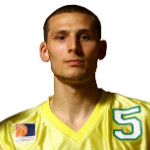

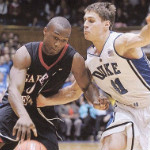
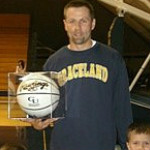

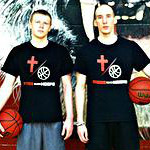

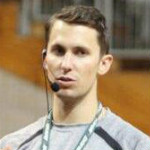


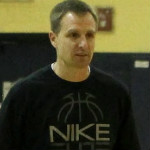
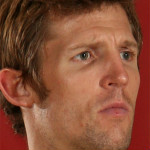


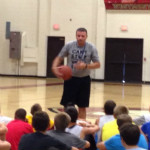
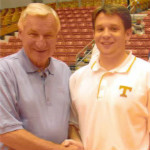

 James Gels –
James Gels – 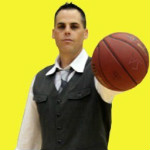


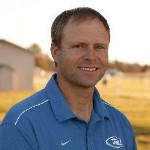
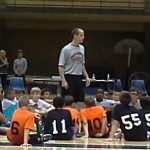
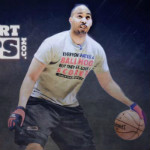

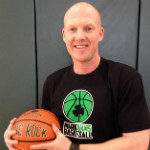

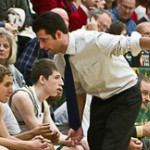
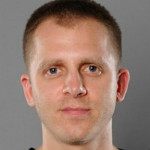
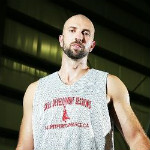
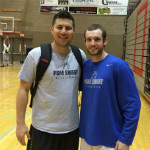



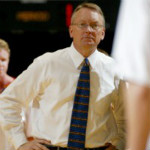


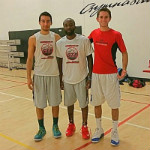


 oachScottFields.com
oachScottFields.com